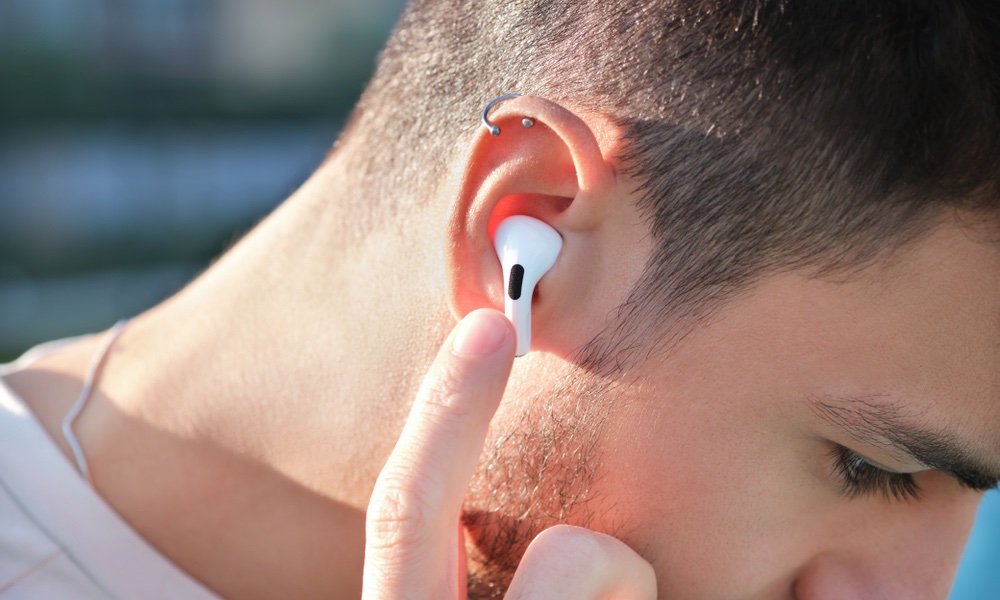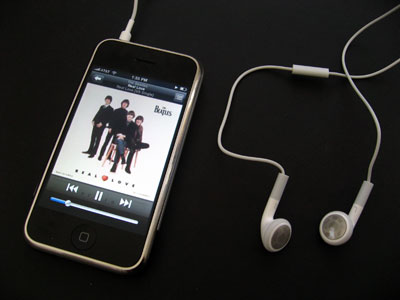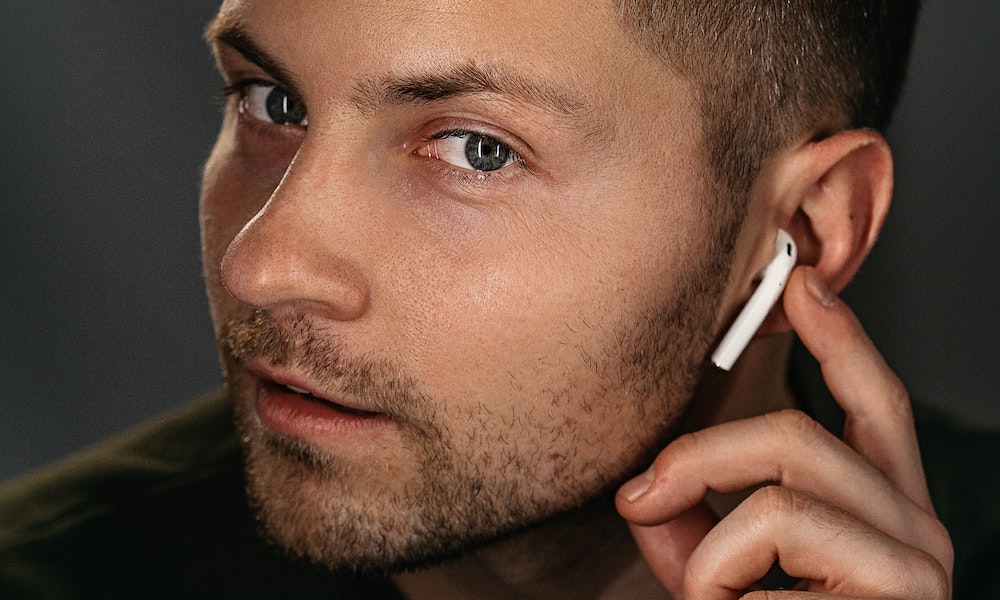Apple Snuck in a Major Advancement in AirPods 3 and AirPods Pro Call Quality
 Credit: Yasar Turanli / Shutterstock
Credit: Yasar Turanli / Shutterstock
Toggle Dark Mode
Every so often, Apple makes an improvement to its hardware that’s so understated that it’s easy to miss. It’s an odd move for a company that normally likes to boast of its accomplishments from the rooftops, but it appears that last year it quietly made the AirPods a lot better in a pretty significant way.
A single sentence in last fall’s AirPods 3 press release mentioned that the latest AirPods feature a new codec to improve voice quality, but didn’t really offer any insight on how much of an improvement that represents.
AirPods also feature AAC-ELD, a superior speech codec that offers full HD voice quality, providing clear, natural communication for FaceTime calls.
Apple
Needless to say, it was easy to sort of gloss over this, especially in the midst of all the other breakthrough features Apple had added to the third-generation AirPods. For the first time, users could get spatial audio with dynamic head tracking, Adaptive EQ, and other more interesting features that had previously been the exclusive domain of the AirPods Pro.
Fortunately, one developer has decided to take a closer look and explain exactly what this means, and in the process he’s also discovered that Apple didn’t just deliver this new AAC-ELC codec to the AirPods 3, but also slipped it into the AirPods Pro in a firmware update somewhere along the way.
Audio Quality of Music vs. Phone Calls
According to web developer Marco Pfeiffer, this change actually represents “the biggest improvement to Bluetooth audio since 2009” — at least as far as call quality is concerned.
As Pfeiffer explains, you’ve probably encountered a profound difference with most Bluetooth headphones between the quality of the music you listen to and the quality of your phone conversations.
Did you ever listen to music on bluetooth headphones and got a call? Did the quality get a lot worse? What happened to all those fancy bluetooth audio codes that every reviewer is always talking about?
Marco Pfeiffer
The reason for this is that the Bluetooth protocol has long used two entirely different audio profiles for these purposes.
In fact, the original Bluetooth protocol — the one used by the earliest Bluetooth phone headsets — only supported a single and very basic Headset Profile (HSP). This was designed to support the kind of bidirectional audio necessary to place and receive phone calls, but it really didn’t do much else.
In fact, this original profile couldn’t even do much more than answer or end a call. Hence, it wasn’t long before that was superseded by the Handsfree Profile (HFP), which added the ability to handle things like redialling the last number, call waiting, and voice dialing. HFP was originally designed for use in cars, but these days it’s become the standard for voice calls in all Bluetooth headsets — including the AirPods.
The problem, however, is that HFP didn’t actually improve the audio quality, it merely added extra features for controlling the mobile phone on the other end of the connection. This also meant it only supported monaural audio, since you pretty much never need to hear a phone conversation in stereo.
To handle music listening, the Bluetooth developers came up with an entirely different method, the Advanced Audio Distribution Profile (A2DP). The intent of this one was to handle unidirectional stereo audio; when paired with the Audio / Video Remote Control Profile (AVRCP), it also allows Bluetooth devices to send commands like skipping tracks, pausing playback, and adjusting the volume on the source device.
We take so many of these things for granted now that it’s hard to believe there was a time when you could listen to stereo audio on a pair of Bluetooth headphones, but still had to pull your digital audio player out to skip tracks. In fact, the original iPhone didn’t even support A2DP; you could only use a monaural headset for making phone calls, but had to plug in a set of wired headphones into its weird recessed headphone jack to actually listen to music.
The problem, however, isn’t just about the Bluetooth profiles, but about the codecs used by them. While A2DP has been expanded to support over a dozen different codecs, from the baseline SBC standard to Apple’s AAC and Qualcomm’s aptX (used by many Android phones), HFP has remained limited to a pair of pretty basic — and boring — monaural profiles that were more about saving bandwidth than delivering top call quality. Here’s Pfeiffer’s explanation of the two “relevant” codecs that HFP supports:
CVSD — a speech optimized codec that was standardized in 2002.
It transfers at 8,000 Hz in mono in both directions. Here is an example recording in this codec.
mSBC — a more compressed version of the default bluetooth stereo codec which was added to the standard in 2009. It transfers at 16,000 Hz in mono in both directions. Here is an example recording in this codec.
…OEM’s have the choice of extremely terrible quality and somewhat terrible quality.
Pfeiffer also goes on to note that the better one of those two, mSBC, is entirely optional. This means many Bluetooth headsets don’t even support that, and since this is entirely separate from A2DP, which is what delivers stereo audio, it’s entirely possible a great-sounding music headset could provide the worst possible call quality that you can imagine.
To be fair, AirPods do support mSBC, but that’s not saying very much, since it’s still terrible quality, especially put up against the AAC codec used for the stereo audio that comes from the iPhone’s Music app — a codec that’s good enough to deliver Spatial Audio with Dolby Atmos to your AirPods.
Raising the Bar for Voice Calls
Clearly, Apple has decided it’s time to improve this situation, and that’s precisely what the new AAC-ELD codec is intended to do.
As the name implies, this is a variant of the Advanced Audio Codec (AAC) that’s already used in the iPhone, AirPods, and just about every other Apple device. It’s also the codec used for standard Apple Music tracks (which is why Apple Music sounds better on AirPods than most rival streaming services — there’s no extra transcoding involved).
The “ELD” portion of this codec stands for “Enhanced Low Delay” which is designed to handle two-way, real-time communication while still preserving the much higher audio quality of AAC.
As Pfeiffer notes, AAC-LED transfers at 24,000 Hz (24 kHz) in mono in both directions. That’s a 50% improvement over than the optical mSBC codec, and a full 300% better than the much more commonly used basic CVSD codec.
Pfeiffer provides another example recording with this codec to illustrate the differences, and while he questions Apple’s choice to call it “full HD voice quality,” he notes that it’s still an improvement.
Obviously, it’s not good enough to handle background music. That normally requires the 44,000–48,000 Hz sample rate used by the popular A2DP codecs like AAC and aptX, but it’s also fair to say that 24,000 Hz is about as high as we can expect for two-way voice calls. A2DP is unidirectional, so it has the full bandwidth of a Bluetooth connection to play with. HFP has to work in both directions, so that bandwidth gets shared.
As we’ve explained previously, Bluetooth has some practical limitations that make it difficult to get great audio quality. Even though modern Bluetooth protocols theoretically offer enough bandwidth for lossless audio, that only happens under perfectly ideal conditions. Sony’s LDAC is the highest-bandwidth codec used over A2DP today, and even that caps out at 900kbps — provided your headphones are within about a foot of your device and nothing else is around to create interference.
Doing this with bidirectional audio is even more complicated, since as Pfeiffer explains, it uses Synchronous Connection Oriented (SCO) transfers which have a fixed data rate of only 64kbps. “To get better audio quality,” Pfeiffer says, “we’d have to fundamentally change how bluetooth transmits bidirectional audio.”
However, recent reports suggest that Apple is trying to do exactly that, with a group of really clever audio engineers investigating options for eking as much bandwidth as possible out of the current technology; or, if not, simply abandoning it and coming up with something entirely different, and better. Apple has already made some remarkable improvements to push the limits of Bluetooth technology, and this new AAC-ELD codec for audio calls is just one more example. We can’t wait to see what Apple’s engineers will come up with next.









